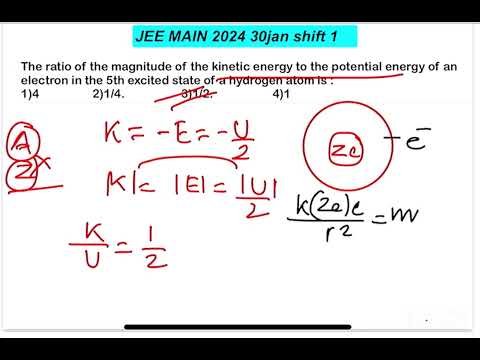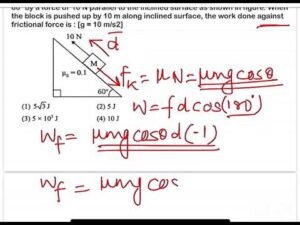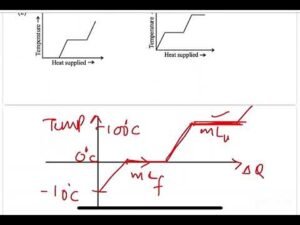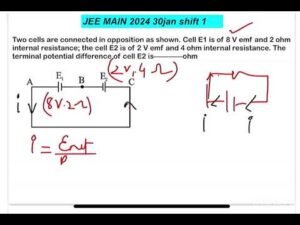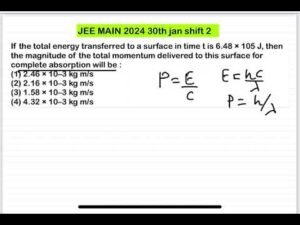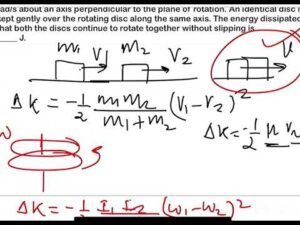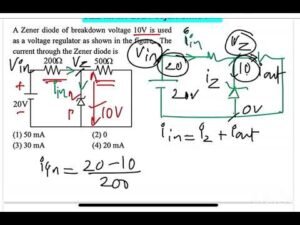The ratio of the magnitude of the kinetic energy to the potential energy of an electron in the 5th excited state of a hydrogen atom is :
1)4 2)1/4. 3)1/2. 4)1
Welcome to Allen.AskDoubtnut.com – India’s Largest Platform for Instant Doubt Solutions
Allen.AskDoubtnut.com is the ultimate destination for instant video solutions to your doubts in Physics—from Class 11th to JEE Advanced and NEET level. With a growing library of over 15 lakh+ expert-created video solutions, we make learning fast, easy, and effective.
Just click a photo of your doubt using the AskDoubtnut in the end and submit in google, and get an instant, step-by-step video explanation. It’s the simplest way to solve doubts in seconds—whether you’re studying for CBSE board exams, IIT-JEE, NEET, or any other competitive exam.
Why AskDoubtnut.com?
• 10,00,000+ Free Video Solutions
• Covers NCERT, JEE Main, JEE Advanced, NEET, and State Boards
• Unlimited Doubt Solving with Just One Click
• Instant, Concept-Based Answers by Experts
• 24×7 Learning Support via the AskDoubtnut App
Trusted by millions of students across India, Allen.AskDoubtnut.com helps you turn doubts into confidence. No more waiting—ask, learn, and grow with Allen.AskDoubtnut.com!
Frequently Asked Questions
How to prepare for IIT-JEE Physics?
To prepare for IIT-JEE Physics, focus on understanding concepts rather than memorizing formulas. Practice solving a variety of problems, especially previous years’ questions. Create a study schedule that covers all topics, with extra time for challenging areas like Mechanics and Electromagnetism. Regular revision and mock tests are essential for success.
What is the difference between elastic and inelastic collisions?
In elastic collisions, both momentum and kinetic energy are conserved. Examples include collisions between hard billiard balls. In inelastic collisions, only momentum is conserved while some kinetic energy is converted to other forms like heat or sound. Most real-world collisions are inelastic to some degree.
What is the photoelectric effect?
The photoelectric effect is the emission of electrons from a material when light shines on it. Einstein explained that light consists of discrete packets of energy called photons. If a photon has enough energy (above the work function of the material), it can eject an electron. This phenomenon demonstrates the particle nature of light and was crucial in the development of quantum theory.

